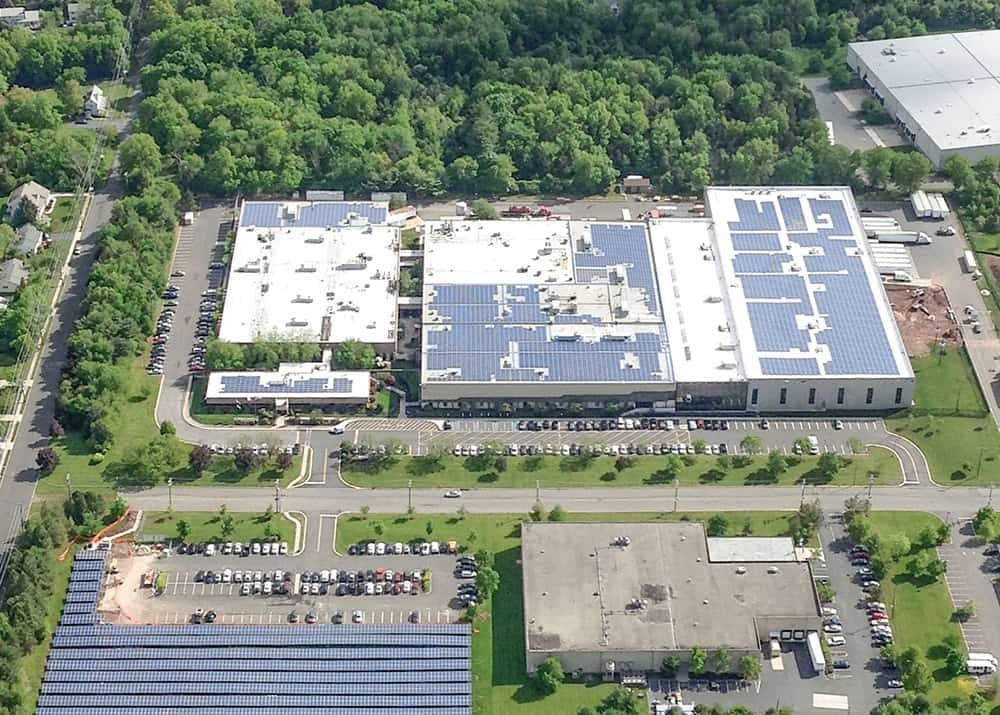 Solar installations in the US will double to 10 million by 2030. Credit: SEIA
Solar installations in the US will double to 10 million by 2030. Credit: SEIA
Solar installations in the US have seen significant increase since 2020, while there are more than five million installations in the country, according to the US Solar Energy Industries Association (SEIA) and Wood Mackenzie.
Currently, over half of all US solar installations, including residential, commercial and industrial (C&I) and large-scale ground-mounted projects, have come online since the start of 2020, and over a quarter have come online since the IRA became law more than a year ago.
This article requires Premium SubscriptionBasic (FREE) Subscription
Unlock unlimited access for 12 whole months of distinctive global analysis
Photovoltaics International is now included.
Regular insight and analysis of the industry’s biggest developments
In-depth interviews with the industry’s leading figures
Unlimited digital access to the PV Tech Power journal catalogue
Unlimited digital access to the Photovoltaics International journal catalogue
Access to more than 1,000 technical papers
Discounts on Solar Media’s portfolio of events, in-person and virtual
Or continue reading this article for free
The residential sector accounts for 97% of all solar installations in the US. As of 2023, the US had 36GW of residential solar systems. By 2030, the US will have 10 million residential solar systems, more than double the number of installations in this sector today. Also, 7% of homes in the US have solar systems, while this proportion will grow to more than 15% by 2030.
States with high number of solar systems
A total of 11 states and territories had over 100,000 systems installed, while 23 states and territories have over 25,000 systems. California led the country with two million solar installations. In 2012, the state had only over 25,000 installed solar systems.
Recently, PV Tech reported that residential solar PV installations in California since the introduction of the NEM 3.0 – a billing structure of California’s rooftop solar net metering scheme – have been roughly equal to the amount in the prior year, with more customers installing battery energy storage systems (BESS).
Some other states have witnessed rapid growth. For example, Illinois was an emerging market with only 2,500 solar installations in 2017, but it is now home to more than 87,000 solar systems. As of the third quarter of 2023, Illinois had only 2,347MW of installed solar capacity, while 7,688MW of solar capacity will be added until 2028.
Florida is another market that has experienced substantial growth, increasing from 22,000 installations in 2017 to 235,000 installations today.
“Solar is scaling by the millions because it consistently delivers on its promise to lower electricity costs, boost community resilience, and create economic opportunities. Solar is quickly becoming the dominant source of electricity on the grid, allowing communities to breathe cleaner air and lead healthier lives,” said Abigail Ross Hopper, president and CEO of SEIA.
Looking ahead, SEIA expected that solar installations in the US will double to 10 million by 2030 and triple to 15 million by 2034. By 2030, 22 states or territories are expected to exceed 100,000 solar installations.
Speaking of installed solar capacity, over half of US had over 1GW of solar installed, compared to only three states a decade ago. By 2034, US solar capacity is expected to grow to 673GW.
PV Tech has been running PV ModuleTech Conferences since 2017. PV ModuleTech USA, on 21-22 May 2024, will be our third PV ModulelTech conference dedicated to the U.S. utility scale solar sector. The event will gather the key stakeholders from solar developers, solar asset owners and investors, PV manufacturing, policy-making and and all interested downstream channels and third-party entities. The goal is simple: to map out the PV module supply channels to the U.S. out to 2025 and beyond.
At the time of writing, Europe had had its most successful year in terms of Power Purchase Agreements (PPAs) with a record 7.8GW of renewable energy contracts signed. As we gather in May 2024 for the third edition of the Renewable Energy Revenues Summit, the energy landscape continues to evolve rapidly, influenced by the beating drum of climate change, volatility around power prices and the need to decarbonise power procurement as well as generation.
San Francisco Bay Area, USA
PV Tech has been running an annual PV CellTech Conference since 2016. PV CellTech USA, on 8-9 October 2024 is our second PV CellTech conference dedicated to the U.S. manufacturing sector. The event in 2023 was a sell out success and 2024 will once again gather the key stakeholders from PV manufacturing, equipment/materials, policy-making and strategy, capital equipment investment and all interested downstream channels and third-party entities. The goal is simple: to map out PV manufacturing in the U.S. out to 2030 and beyond.
Understanding PV module supply to the European market in 2025. PV ModuleTech Europe 2024 is a two-day conference that tackles these challenges directly, with an agenda that addresses all aspects of module supplier selection; product availability, technology offerings, traceability of supply-chain, factory auditing, module testing and reliability, and company bankability.
The conference will gather the key stakeholders from PV manufacturing, equipment/materials, policy-making and strategy, capital equipment investment and all interested downstream channels and third-party entities. The goal is simple: to map out PV manufacturing out to 2030 and beyond.
>>> Read full article>>>
Copyright for syndicated content belongs to the linked Source : PV Tech – https://www.pv-tech.org/seia-over-quarter-of-solar-systems-installed-since-ira-passage-in-us/






























